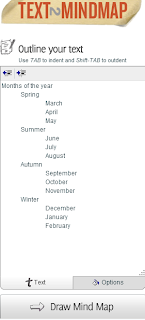TimeToast is free to use with no age limitations that I could find in the Terms of Service or Privacy Policy but I always tend to be cautious, keeping parents and my administration advised about applications students are using. I'm noting this because there is a Browse feature on the site allowing for the viewing of other created timelines. It is necessary to have an email address to register.
The Browse button is located in the upper-right hand corner of the home page. Included are these main categories:
- music
- politics
- film
- biography
- science and technology
- art and culture
- business
- personal
- history
At the bottom of the home page is another way to search under the heading of Explore. Users can search by popular timelines, updated timelines or latest timelines.
To register click the bright red Sign Up! button on the home page. Registration requires a username, email address and password plus agreeing to follow the terms and conditions. An email will be sent to activate your account. You can also sign up using your Facebook account.
When you have signed in a new window appears asking if you want to create a new timeline, view your previously created timelines, browse the latest timelines, browse categories or view your profile. Your profile is accessed along with editing or closing your account by clicking on the account button in the upper-right hand corner of the page. Your profile can include a link to your website or blog.
When you click on create a new timeline a screen pops up asking you to give your timeline a title, select a category and insert an image. Click Go. You can now add an event, a timespan or edit the title and picture. When you click Add event, new options are shown.
You must include a title and a date. You can choose to add a description, a link and an image. When using this with students, the adding of images is always a good time to talk about copyright and appropriate sources to use.
At any time by clicking on an individual event you can edit or delete it. After completing your work, beneath the timeline on the left side is a button to click, View this timeline. This takes you to more options.
You can edit the timeline, change it from draft (draft timelines can't be viewed) to public, add tags and view it in text format. Once you have made the timeline public it can be embedded or shared via Facebook or Twitter. TimeToast creates a direct link, provides an HTML code or users can create their own code and color for the background.
A timeline status can be changed from public back to draft. A box is provided for viewer comments.
A timeline status can be changed from public back to draft. A box is provided for viewer comments.
For generating a simple, interactive historical perspective with descriptions, images and links TimeToast is a great choice. Students can work individually or together researching a series of events with different dates on a specific topic or a single date across the years. This could be used to plan a project with specific goals to be met in a given time period. I can see using this with nonfiction titles as well as fiction titles or a combination of the two to design a visual representation.
I decided to do a little research about events that have happened on October 31 over the years.

































.png)






.jpg)















